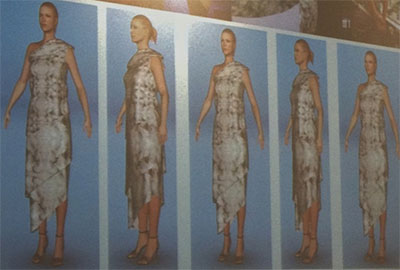4 Mar 2013
The University of Huddersfield hosted Materials coloration - the past, present and future of textile printing, on a snowy evening on 1 Feb 2013. The occasion was organised by the Yorkshire and the Humber Group with the Society of Dyers and Colourists (SDC) North of England Region, and introduced by the group's chairman Prof Joe Sweeney.
Derek Heywood from SCI gave an overview of traditional methods of printing from roller printing, to stencil printing, to batik. He noted that batik, a made using a wax-resist dyeing technique, is rarely seen these days and showed us a beautiful sample of a batik-printed material.
Derek, who has worked in textile mills in the UK, Canada, and elsewhere, and is now a consultant in the industry, also discussed processing, sharing his thoughts on the difference between old and new methods. While gums used to be made up every morning by hand, for instance, this process is now one of many that are now automated.
The audience was delighted to see the printed materials he passed around, including a transfer print on ceramic and a BASF print on fabric from 1964, which he likes to use for picnics (top picture). Derek concluded his talk by observing that while past methods now seemed almost like 'black magic' or an art, every day was different and enjoyable.
The next talk, describing how 3D digital technology and Computer Aided Design (CAD) programs are used, was given jointly by Andrew Taylor and Linda Lewis (University of Huddersfield) and Geoff Ward (Optitex) and described a combined project between Assyst Bullmer, Optitex and the University.
Andrew Taylor began by asked what educational value 3D digital technology could add to traditional methods and 2D CAD programs in textiles and fashion? He shared the inspiring story of games design MA student, Baz Armstrong, who identified similarities between costume design and video game design.
Linda Lewis then described the work of Danielle Riley, who graduated in Surface Design in 2011. Danielle's innovative research investigated whether a 3D costume visual could be made into a print using a digital textile printer, ie a flat print from a 3D model. In a highly unusual departure, Danielle's digital pattern was printed directly on to pre-cut pattern pieces. This meant that material was not wasted - a very attractive aspect for industry. The final garment was printed to silk and the dress modelled in real-life (see large photo) and shown to be of excellent quality and design.
Geoff Ward stressed that all the work was experimental at this stage, and however innovative the ideas, traditional techniques, such as pattern cutting, are still required.
This presentation illustrated well how modern techniques can be used to change the way we design garments, whilst showing the importance of teaching traditional techniques. The whole project was an experiment borne out of Baz's initial idea and the team is keen to expand on this work in the future.

Ron then discussed digital inks for textiles and especially how pigments and printing techniques are different for clothes which can be machine-washed and those needing to be dry cleaned. He gave an overview of the different printers used, and the advantages of each. He also gave us a valuable insight into the Italian market, where many famous fashion designers do their printing. He noted that there are plenty of new developments on the way, from new markets such as China as well as technical advances such as new print heads, different ink nozzles and machines which can take wider fabric widths.
Ron closed his presentation by saying that the benefits of modern digital printing will always outweigh screen print, and challenged chemists across the country to come up with a material that could protect textiles from UV and IR light. He quipped that whoever manages this could get very rich indeed!
Jessica Breen
Y&H group communications officer
SCI Yorkshire and The Humber Group
Follow us on Twitter
